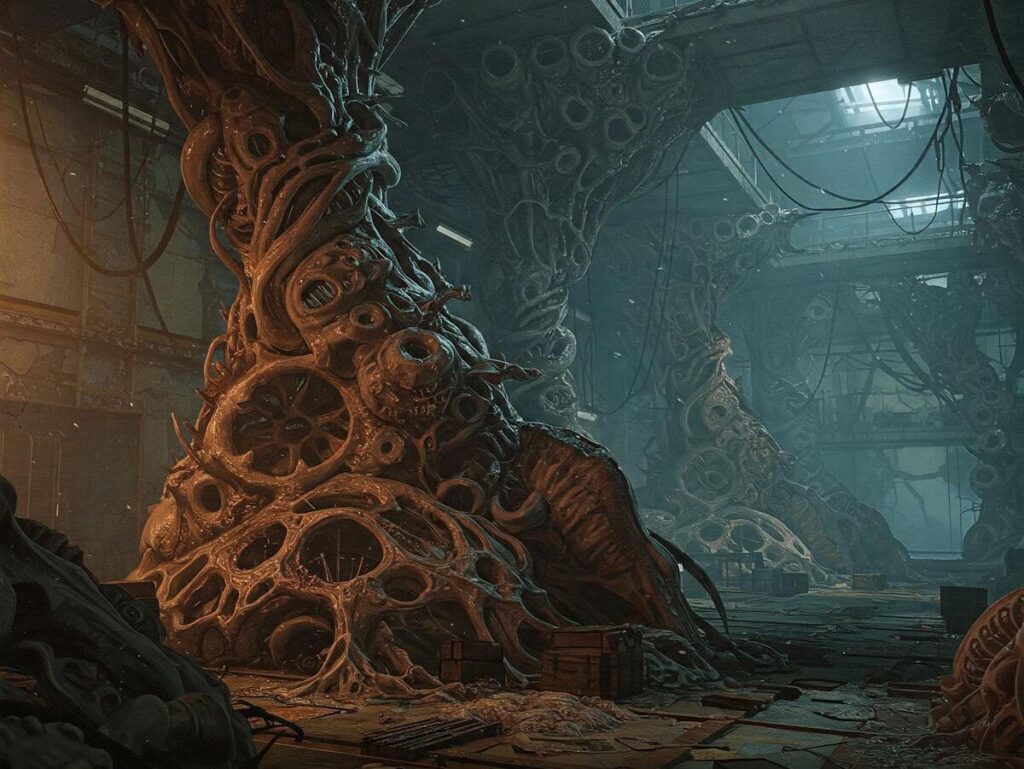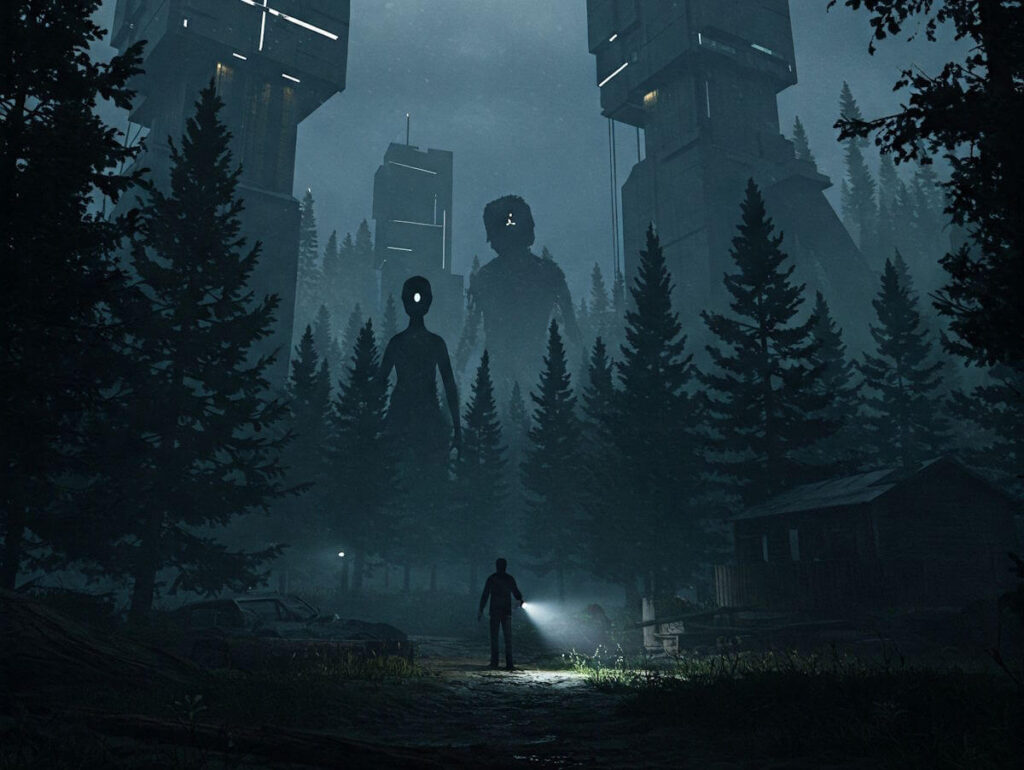Forspoken, an action role-playing game developed by Luminous Productions and published by Square Enix, made its debut on January 24, 2023. The game was highly anticipated ahead of its release, primarily due to its enticing premise that promised players an enchanting journey through a rich and magical fantasy world. Set in a fictional universe called Athia, Forspoken follows the story of Frey Holland, a young woman from New York who is transported to this stunning realm through a mysterious portal.
The premise of exploring a vibrant fantasy landscape filled with mystical creatures, magical abilities, and intriguing lore captivated many gamers during the pre-release phase. Anticipation was further fueled by a series of thrilling trailers and gameplay showcases that highlighted the game’s graphics, combat system, and exploration mechanics. Many players eagerly awaited Forspoken, hoping it would deliver an immersive experience in a beautifully crafted world.
In addition to its breathtaking visuals, Forspoken promised a blend of engaging combat mechanics, allowing players to cast powerful spells and utilize parkour-like movement abilities to navigate the environment. The game aimed to combine action and storytelling, providing a narrative experience that would resonate with players. However, these initial expectations set a high bar for the developers, as gamers were hopeful that Forspoken would be a fresh entry in the fantasy genre, worthy of their time and investment.
As the release date approached, discussions among the gaming community intensified, with debates focusing on whether Forspoken could meet the lofty standards it had set for itself. As with many titles in the gaming industry, initial excitement was accompanied by speculation about the game’s potential drawbacks and challenges. Ultimately, the reception of Forspoken would depend on its ability to fulfill the promises made during its promotional campaign.
Narrative and World-Building Flaws
In the realm of interactive storytelling, a robust narrative and coherent world-building are essential for immersing players in the experience. In the case of Forspoken, the game presents several narrative elements that lack coherence and depth, which can detract from the overall engagement of players. While the premise introduces intriguing concepts of magical elements intertwined with the protagonist’s journey, there are deficiencies in how these elements are executed. The motivations behind character actions often feel underdeveloped or inconsistent, which can lead to confusion regarding their roles within the fantasy world.
The world of Forspoken, intended to be rich and vibrant, occasionally falls flat due to a lack of logical coherence within the fantasy setting. Environmental storytelling, which can effectively enhance a player’s connection to a game’s world, appears shallow in this instance. Inconsistent world rules, combined with an underexplored history of its civilizations, limit players’ understanding of the context in which the characters function. As a result, players may struggle to feel genuinely invested in the unfolding narrative.
Moreover, while the protagonist’s personal journey is paramount, the interrelation between her character arc and the larger narrative often seems tenuous. The stakes for the main character may not resonate deeply due to poorly established relationships and motivations. This gap in narrative depth can hinder the emotional resonance needed for players to forge meaningful connections with the storyline. As players progress, a lack of compelling plot developments and unresolved story threads may lead to diminishing interest. Consequently, the combination of flawed narrative structure and insufficient world-building in Forspoken can significantly impact player engagement and satisfaction.
Gameplay Mechanics and Player Experience
Forspoken presents a unique blend of gameplay mechanics designed to immerse players into its fantasy world. The combat system is a notable aspect, characterized by a variety of magical abilities that players can wield in engaging battles against a range of adversaries. These combat mechanics, which emphasize fluidity and creativity, encourage players to experiment with different spells and combinations. However, there are instances where the combat can feel repetitive, as certain spells may become less effective against frequently encountered enemies, leading to a diminished sense of challenge and variety.
Another important facet of Forspoken is its exploration elements, which offer players the freedom to traverse a sprawling open-world environment. The game incentivizes exploration through a rich landscape filled with hidden treasures, lore, and combat encounters. Players are equipped with parkour abilities that allow for swift navigation, enhancing the overall dynamic of movement. While this feature adds excitement and accessibility, some players may find that the lack of engaging side missions or noteworthy discoveries can detract from the sense of adventure, leading to moments of stagnation during exploration.
The player experience within Forspoken is further defined by the overarching narrative and character interactions. The game’s protagonist, Frey, engages with the world and its inhabitants through various dialogues, which can enhance emotional investment but sometimes feel inconsistent in quality. As players progress, they may find the storylines compelling, yet the pacing can vary significantly, affecting the flow of gameplay. Overall, while Forspoken offers ambitious mechanics intended to captivate players, these elements can sporadically falter, affecting the engagement and enjoyment throughout the gaming experience.
Visual and Technical Performance
The visual and technical performance of Forspoken has received significant scrutiny since its release, as many players noted a disparity between the game’s ambitious visual design and its actual execution. The graphics quality is undeniably impressive on paper, showcasing lush environments and detailed character models. However, despite these aesthetics, players have reported inconsistencies in how these visuals translate into gameplay.
One of the primary aspects of the game’s design aesthetics is its vibrant color palette and dynamic world-building, which were heavily marketed prior to launch. While the landscapes of Athia are striking and immersive, many players found that the optimization fell short. Frame rate drops during intense action sequences were commonly cited, detracting from the fluidity that players expect in a fantasy action-adventure title. This inconsistency can be jarring and disrupt the immersive experience intended by the developers.
Another pressing concern involves technical performance issues, particularly bugs that mar the gameplay experience. Players encountered various glitches and instability that hindered enjoyment. Certain players reported character animations that were not as fluid as anticipated, occasionally resulting in awkward movement or unresponsive actions during key moments. Loading times, often considered a minor frustration in gaming, became a significant issue for players of Forspoken, as prolonged waiting periods deterred them from fully engaging with the vibrant world.
Ultimately, while the visual aspirations behind Forspoken were commendable, the execution faltered. The combination of performance issues—ranging from visual inconsistencies to technical malfunctions—had a pronounced impact on overall enjoyment. The anticipation surrounding this title, particularly concerning its graphics and animations, has led to disappointment among players, who expected a seamless, visually captivating experience.
Character Development and How It Affects Engagement
The intricacies of character development in a fantasy world can significantly shape player engagement, as deeply crafted characters often define the emotional landscape of a narrative. In Forspoken, the protagonist, Frey Holland, represents a dichotomy of complexities; her journey from a troubled life in New York City to the mystical land of Athia is ostensibly filled with potential growth. However, this potential is often left unfulfilled, creating a disconnect between Frey and the player. The initial premise sets her up as a strong-willed character, yet her emotional depth is rarely explored beyond surface-level traits.
Moreover, supporting characters—including the enigmatic Cuff and other notable figures—fail to offer substantial relational dynamics that could enrich the plot. The interactions between Frey and these characters lack the nuance needed to foster authentic connections. Instead of evolving through their experiences and conflicts, characters often remain static, which undermines the player’s emotional investment in their respective journeys. This stagnation can lead to a feeling of indifference, causing players to disengage with the overarching narrative.
The lack of development is further exacerbated by minimal backstory revelations and character arcs that feel disconnected from the foundational plot. As players traverse the rich and vibrant environments of Athia, they discover visually stunning worlds and intricate lore. However, without compelling character narratives to anchor these explorations, the experience may come across as hollow. Players may find themselves questioning not just Frey’s motivations, but the intentions of the game developers in crafting such one-dimensional personas. This oversight in character relatability likely contributed to a broader sense of disinterest among players, influencing their overall enjoyment of Forspoken. Overall, the effectiveness of character development stands as a critical pillar in determining player engagement within any fantasy realm, including that of Forspoken.
Critical and Player Reception
The release of Forspoken was met with a mixture of anticipation and trepidation, reflecting a broader trend in modern gaming where hype often runs parallel to significant expectations. Upon its launch, critical reception varied widely, with many gaming outlets providing reviews that highlighted both strengths and weaknesses. Generally, critics applauded the game’s expansive open world and visually striking graphics, which were viewed as impressive achievements reflective of contemporary gaming capabilities. However, this praise was often underscored by a laundry list of criticisms regarding gameplay mechanics, narrative coherence, and character development.
Many reviewers pointed out that despite its stunning visuals, Forspoken often felt lacking in depth and engagement, particularly in how its story was conveyed. Critics noted that the dialogue, perceived as clunky and at times cringe-worthy, detracted from players’ immersion in the narrative. Concerns regarding character arcs were also prevalent, leading some to describe the protagonist, Frey, as lacking depth and relatability. Such feedback indicated a disconnect between player expectations for a rich narrative experience in a fantasy epic and what Forspoken ultimately delivered.
Feedback from the player community mirrored many of these critical insights, resulting in mixed reviews on platforms like Metacritic and various gaming forums. While some players appreciated the game’s high-paced combat and exploration elements, a significant portion expressed disappointment with the storytelling and character interactions. This divide might have contributed to a lack of enthusiasm in the game’s marketing and subsequent sales. As players voiced their concerns, it became evident that Forspoken’s ambitious world-building was not enough to overshadow its narrative shortcomings, leading to a challenging reception that ultimately impacted its standing in a competitive marketplace.
Comparisons with Other Fantasy Games
The fantasy gaming genre has produced several iconic titles that have set new benchmarks for storytelling, gameplay, and character engagement. Games such as The Witcher 3: Wild Hunt, Breath of the Wild, and Dark Souls have captivated players through their immersive worlds and compelling narratives. Each of these titles offers rich lore, well-developed characters, and engaging mechanics, setting them apart from Forspoken, which struggled to reach similar heights.
One of the defining features of successful fantasy games is their ability to weave intricate stories that resonate with players. For instance, The Witcher 3 masterfully integrates choices and consequences into its narrative, allowing players to feel a genuine connection to the world and its inhabitants. In contrast, Forspoken’s narrative appears disjointed at times, failing to create that same sense of investment. The plot lacks the depth and cohesiveness found in its successful counterparts, leaving players disengaged from the experience.
In terms of gameplay mechanics, titles like Breath of the Wild have revolutionized open-world exploration through innovative movement and puzzle-solving elements. This enhanced freedom allows players to interact with the environment in meaningful ways. Forspoken’s gameplay, while ambitious with its parkour system and magical abilities, often feels uninspired and repetitive. The magical combat, though visually striking, lacks the strategic depth and variety that players have come to expect from high-quality fantasy games.
Character engagement is another crucial element where Forspoken falters. Successful fantasy games typically feature well-rounded characters with relatable motivations and backstories. Games like Dark Souls reinforce the player’s connection to characters through memorable encounters and extensive lore. Forspoken’s characters, however, come off as one-dimensional, limiting the overall emotional impact of the journey.
Ultimately, these comparisons illustrate the areas where Forspoken has not met the expectations established by its peers, further emphasizing the challenges the game faces within the competitive fantasy genre.
Lessons Learned for Future Game Developments
The development of Forspoken has presented a multitude of obstacles that can serve as insightful lessons for future game creators, particularly within the fantasy genre. One of the most critical aspects to consider is the significance of a compelling narrative. Forspoken, while visually striking, struggled to provide a cohesive and engaging storyline that resonates with players. For future projects, developers must prioritize crafting narratives that not only captivate but also maintain players’ interest throughout the gameplay. A well-developed story can enhance the emotional connection with the game, making players more invested in the characters and their journeys.
Furthermore, in-depth character development is essential for enriching the gameplay experience. Forspoken’s protagonist lacked substantial growth, which ultimately hindered player engagement. Future developers should focus on creating multi-dimensional characters with distinct motivations, backstories, and arcs that evolve within the narrative. This approach not only deepens the player’s immersion but also fosters a greater understanding of the game world and its lore.
Robust gameplay mechanics are also vital for the success of any fantasy game. Players expect intuitive controls, balanced challenges, and a system that rewards exploration and skill. In Forspoken, several gameplay mechanics were criticized for being underwhelming or poorly executed. To mitigate such issues, developers should conduct extensive playtests and solicit player feedback throughout the development process. Early testing can uncover flaws in gameplay design and provide invaluable insights into how players interact with the game.
By acknowledging and learning from the challenges observed in Forspoken, developers can make informed decisions that enhance narrative depth, character complexity, and gameplay robustness. This iterative approach will lead to more successful fantasy projects that resonate with audiences and sustain their engagement, ultimately ensuring a more favorable reception in a competitive gaming landscape.
Conclusion: The Future of Forspoken and Its Legacy
The narrative surrounding Forspoken has been a topic of considerable discussion within the gaming community. As we analyze the factors contributing to its mixed reception, it’s clear that while the game showcased a rich fantasy world and innovative mechanics, it ultimately struggled with execution. Issues such as dialogue quality, character development, and gameplay mechanics diluted the immersive experience that players had anticipated. Perhaps one of the most critical takeaways is the learning potential for both the developers and the gaming industry at large. Adjustments to narrative structure and character arcs could significantly enhance future installments.
Looking ahead, there exists a distinct possibility for Forspoken to evolve into a more polished franchise. Developers may take cues from the community’s feedback to refine elements of storytelling and gameplay in any sequels. The fantasy genre continues to thrive, and with the right adjustments, Forspoken could secure a more favorable standing among other fantasy titles. This adaptability may pave the way for expanding the narrative universe, which could further engage an audience hungry for depth and innovation in game storytelling.
Moreover, the legacy of Forspoken will likely be viewed through the lens of its ambitions and shortcomings. It serves as a testament to the challenges inherent in creating a compelling fantasy world. Future game developers may reflect on Forspoken’s journey, leveraging its lessons to inspire more cohesive storytelling and character development in their own projects. As the fantasy genre continues to evolve, Forspoken’s place in that evolution will become clearer, potentially transforming from a cautionary tale into a foundation for success in future gaming endeavors.





